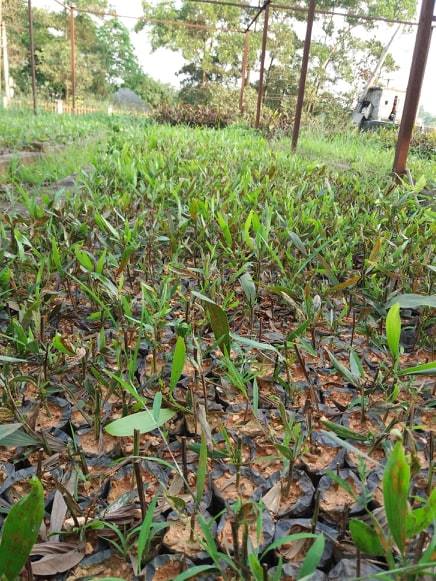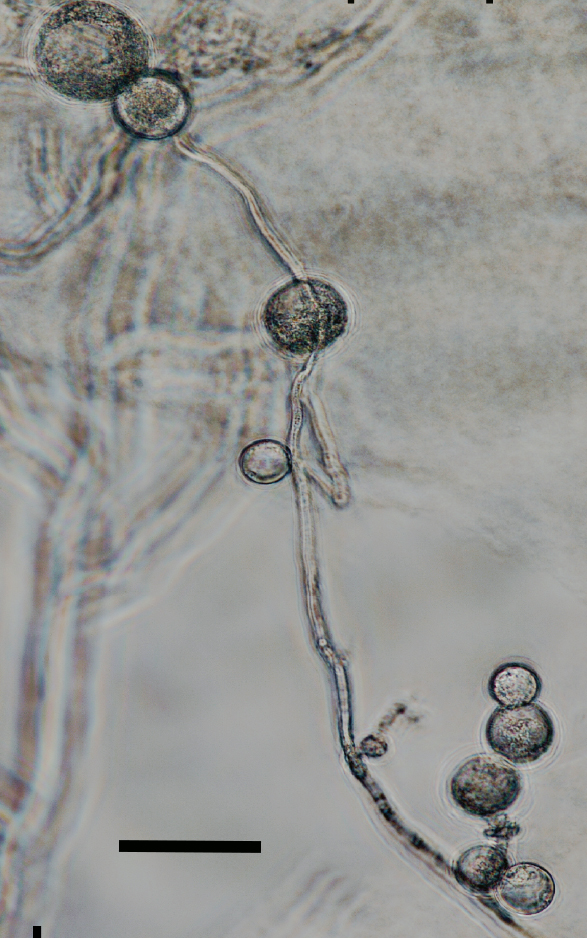Gallery
Image Type
Morphological Structure
Clades
Phytophthora spp. in subclade 7a: portion of the seven-loci ML phylogeny featuring the type cultures of 212 described species (by T. Bourret). Notice the position of P. abietivora Ex-type NRRL 66892. Gloria Abad, USDA S&T.
Phytophthora spp. in subclade 7a: Morphological Tabular key (PDF) and Tabular key legends (PDF) in IDphy2 KEY SECTION. Notice the data of P. abietivora Ex-type NRRL 66892. Gloria Abad, USDA S&T.
Phytophthora spp. in subclade 2e: portion of the seven-loci ML phylogeny featuring the type cultures of 212 described species (by T. Bourret). Notice the position of P. acaciae Ex-type AN02. Gloria Abad, USDA S&T.
Phytophthora spp. in subclade 2e: Morphological Tabular key (PDF) and Tabular key legends (PDF) in IDphy2 KEY SECTION. Notice the data of P. acaciae Ex-type AN02. Gloria Abad, USDA S&T.
Phytophthora spp. in subclade 2e: portion of the seven-loci ML phylogeny featuring the type cultures of 212 described species (by T. Bourret). Notice the position of P. acaciivora Ex-type CBS 138638. Gloria Abad, USDA S&T.
Phytophthora spp. in subclade 2e: Morphological Tabular key (PDF) and Tabular key legends (PDF) in IDphy2 KEY SECTION. Notice the data of P. acaciivora Ex-type CBS 138638. Gloria Abad, USDA S&T.
colony morphology after 7 d growth at 20ºC on CA, V8 agar, MEA and PDA (from left to right)
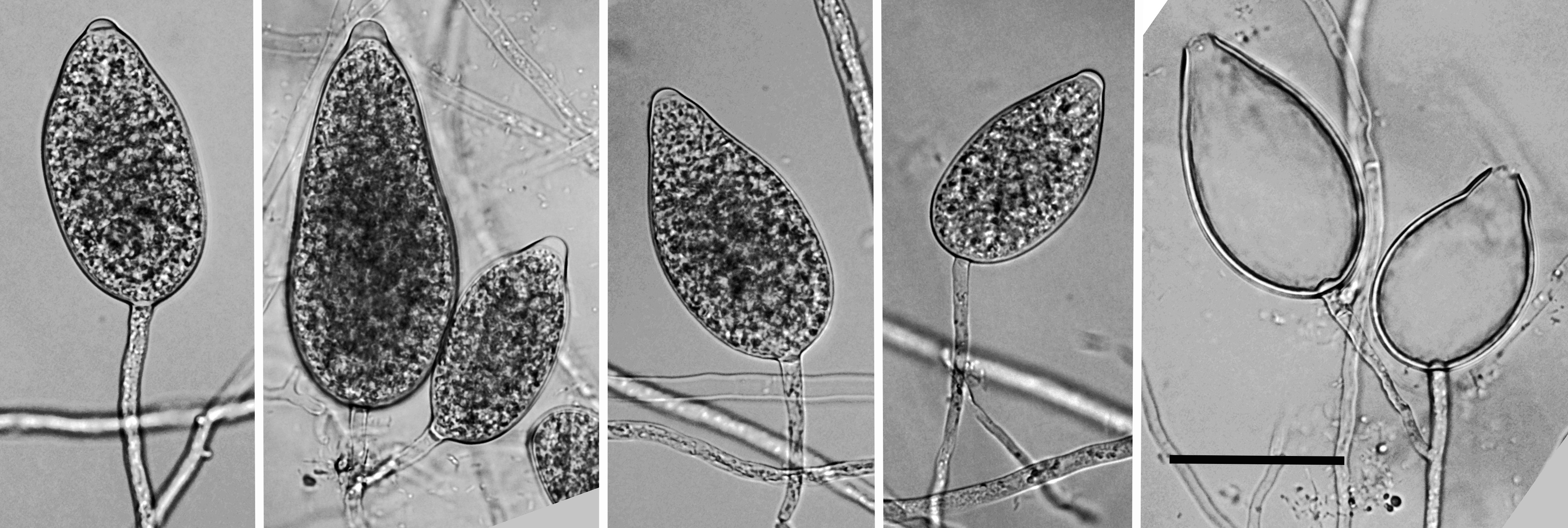 persistent, semi-papillate to papillate, predominantly elongated ovoid sporangia; scale bar = 25micro;m
persistent, semi-papillate to papillate, predominantly elongated ovoid sporangia; scale bar = 25micro;m
persistent, semi-papillate to papillate, predominantly elongated ovoid sporangia; scale bar = 25µm
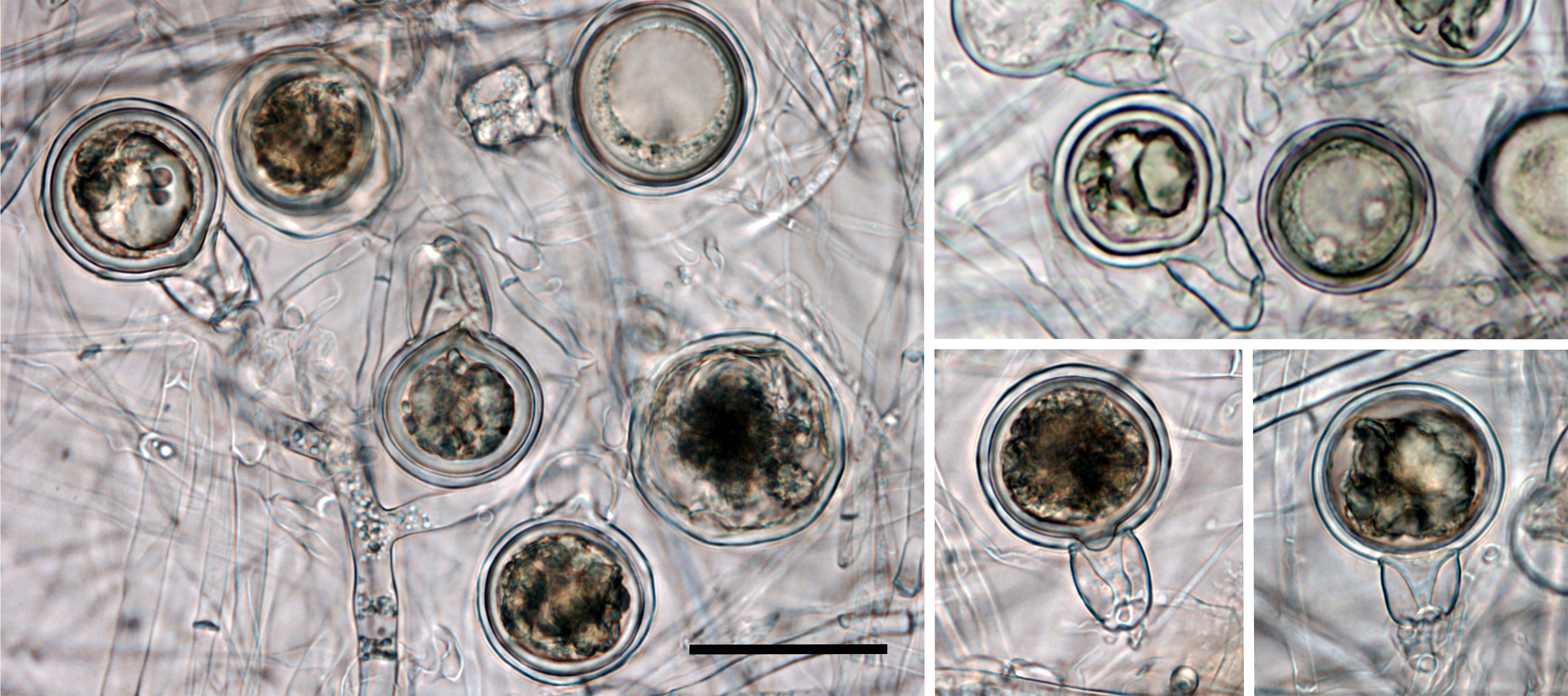 Oogonia with wavy walls containing aplerotic oospores with large ooplasts which turn pale brown on maturity. Antheridia were exclusively amphigynous.nbsp; Many oospores aborted after the formation of walls. scale bar = 25micro;m
Oogonia with wavy walls containing aplerotic oospores with large ooplasts which turn pale brown on maturity. Antheridia were exclusively amphigynous.nbsp; Many oospores aborted after the formation of walls. scale bar = 25micro;m
Oogonia with wavy walls containing aplerotic oospores with large ooplasts which turn pale brown on maturity. Antheridia were exclusively amphigynous. Many oospores aborted after the formation of walls. scale bar = 25µm
Phytophthora spp. in subclade 2c: portion of the seven-loci ML phylogeny featuring the type cultures of 212 described species (by T. Bourret). Notice the position of P. acerina Ex-type CBS 133931 = S&T BL114. Gloria Abad, USDA S&T.
Phytophthora spp. in subclade 2c: Morphological Tabular key (PDF) and Tabular key legends (PDF) in IDphy2 KEY SECTION. Notice the data of P. acerina Ex-type CBS 133931 = S&T BL114. Gloria Abad, USDA S&T.
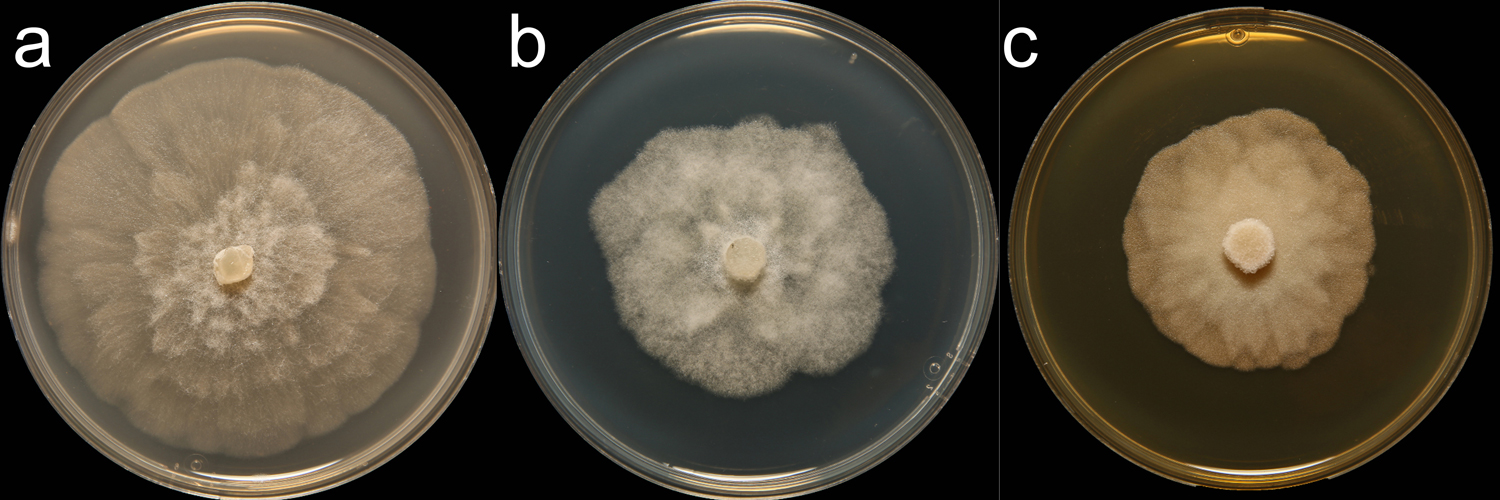 Phytophthora acerina (CPHST BL 114) colonies of the ex-type grown for 7 days on (a) V8reg; Agar, (b) potato dextrose agar, and (c) malt extract agar; photo by Krysta Jennings and Leandra Knight, USDA-APHIS-PPQ
Phytophthora acerina (CPHST BL 114) colonies of the ex-type grown for 7 days on (a) V8reg; Agar, (b) potato dextrose agar, and (c) malt extract agar; photo by Krysta Jennings and Leandra Knight, USDA-APHIS-PPQ
Phytophthora acerina (CPHST BL 114) colonies of the ex-type grown for 7 days on (a) V8® Agar, (b) potato dextrose agar, and (c) malt extract agar; photo by Krysta Jennings and Leandra Knight, USDA-APHIS-PPQ
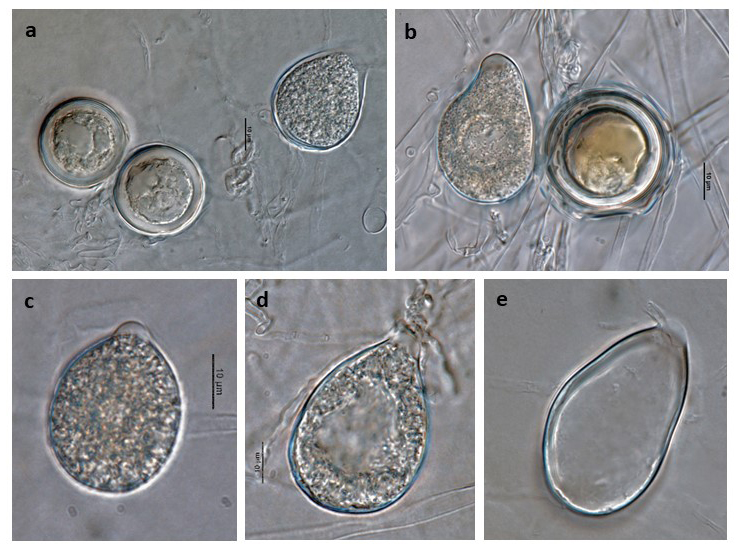 Phytophthora acerina (CPHST BL 114, ex-type) asexual phase and sexual phase (a-b);nbsp;different shapes of semi-papillatenbsp;persistent sporangia (a-e);nbsp;photos by G. Abad, USDA-APHIS-PPQ
Phytophthora acerina (CPHST BL 114, ex-type) asexual phase and sexual phase (a-b);nbsp;different shapes of semi-papillatenbsp;persistent sporangia (a-e);nbsp;photos by G. Abad, USDA-APHIS-PPQ
Phytophthora acerina (CPHST BL 114, ex-type) asexual phase and sexual phase (a-b); different shapes of semi-papillate persistent sporangia (a-e); photos by G. Abad, USDA-APHIS-PPQ
 Phytophthora acerina (ex-type CPHST BL 114) sexual phase formed on hemp seed agar (a-c):nbsp;smooth-walled oogonia with paragynous antheridia and plerotic oospores; photos by G. Abad, USDA-APHIS-PPQ
Phytophthora acerina (ex-type CPHST BL 114) sexual phase formed on hemp seed agar (a-c):nbsp;smooth-walled oogonia with paragynous antheridia and plerotic oospores; photos by G. Abad, USDA-APHIS-PPQ
Phytophthora acerina (ex-type CPHST BL 114) sexual phase formed on hemp seed agar (a-c): smooth-walled oogonia with paragynous antheridia and plerotic oospores; photos by G. Abad, USDA-APHIS-PPQ
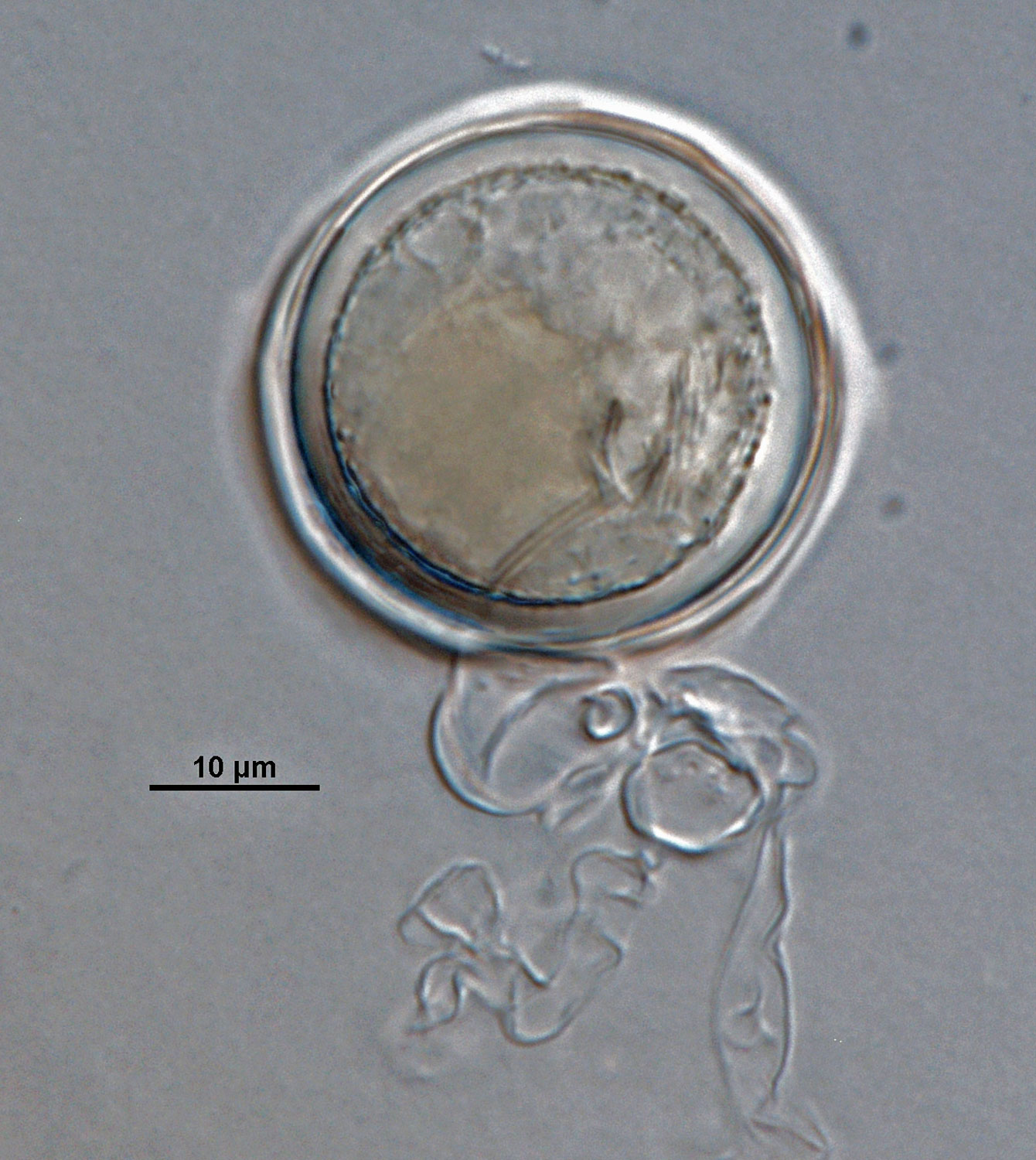 Phytophthora acerina nbsp;(ex-type CPHST BL 114) sexual phase formed on hemp seed agar. Smooth-walled oogoniumnbsp;with paragynous antheridiumnbsp;and plerotic oospore. Photonbsp;by G. Abad, USDA-APHIS-PPQ.
Phytophthora acerina nbsp;(ex-type CPHST BL 114) sexual phase formed on hemp seed agar. Smooth-walled oogoniumnbsp;with paragynous antheridiumnbsp;and plerotic oospore. Photonbsp;by G. Abad, USDA-APHIS-PPQ.
Phytophthora acerina (ex-type CPHST BL 114) sexual phase formed on hemp seed agar. Smooth-walled oogonium with paragynous antheridium and plerotic oospore. Photo by G. Abad, USDA-APHIS-PPQ.
 Phytophthora acerina nbsp;(CPHST BL 114, ex-type) asexual phase;nbsp;semi-papillatenbsp;persistent sporangium. Photonbsp;by G. Abad, USDA-APHIS-PPQ.
Phytophthora acerina nbsp;(CPHST BL 114, ex-type) asexual phase;nbsp;semi-papillatenbsp;persistent sporangium. Photonbsp;by G. Abad, USDA-APHIS-PPQ.
Phytophthora acerina (CPHST BL 114, ex-type) asexual phase; semi-papillate persistent sporangium. Photo by G. Abad, USDA-APHIS-PPQ.
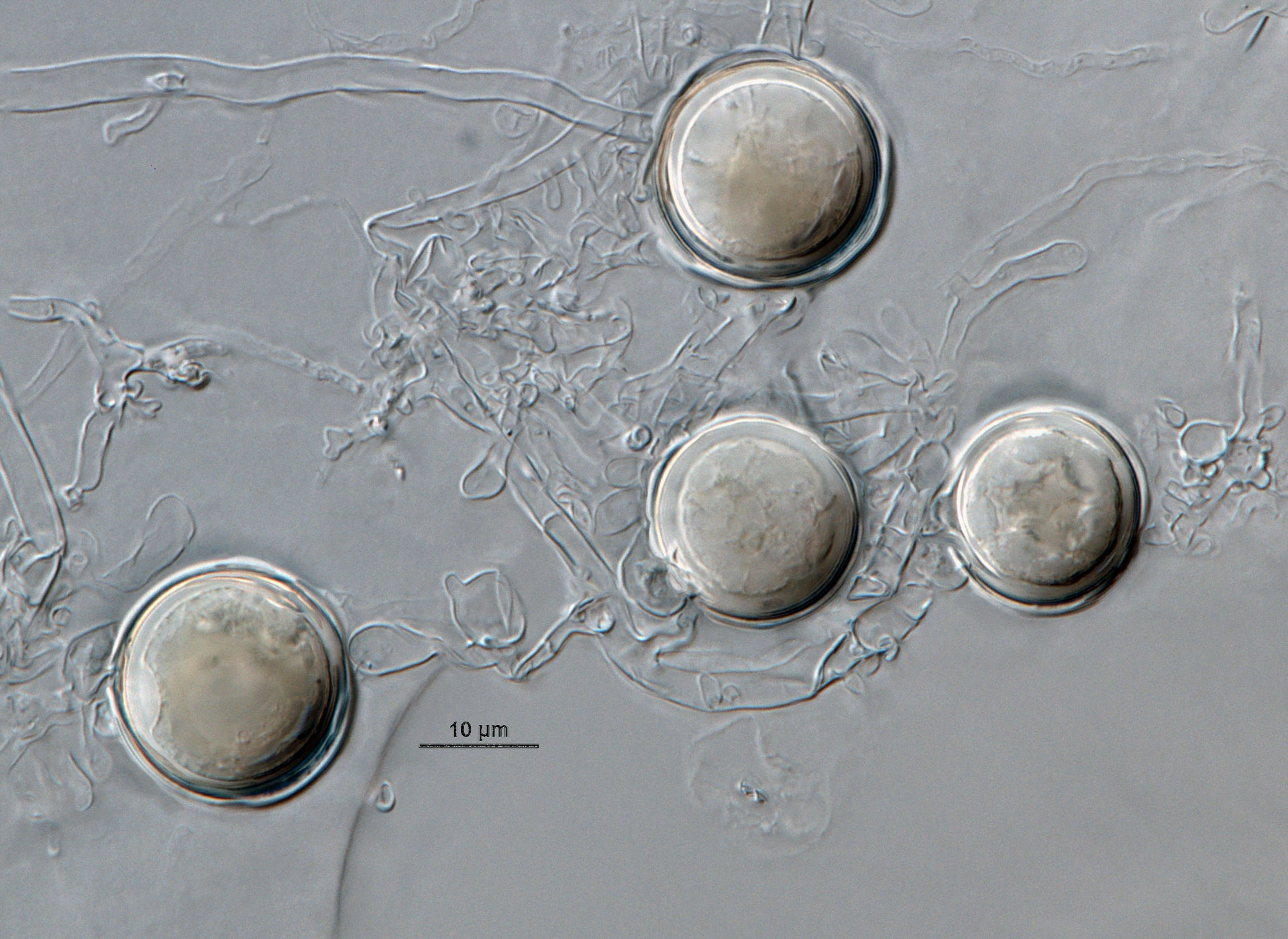 Phytophthora acerina nbsp;(ex-type CPHST BL 114) sexual phase formed on hemp seed agar. Smooth-walled oogonianbsp;with paragynous antheridianbsp;and plerotic oospores. Photonbsp;by G. Abad, USDA-APHIS-PPQ.
Phytophthora acerina nbsp;(ex-type CPHST BL 114) sexual phase formed on hemp seed agar. Smooth-walled oogonianbsp;with paragynous antheridianbsp;and plerotic oospores. Photonbsp;by G. Abad, USDA-APHIS-PPQ.
Phytophthora acerina (ex-type CPHST BL 114) sexual phase formed on hemp seed agar. Smooth-walled oogonia with paragynous antheridia and plerotic oospores. Photo by G. Abad, USDA-APHIS-PPQ.
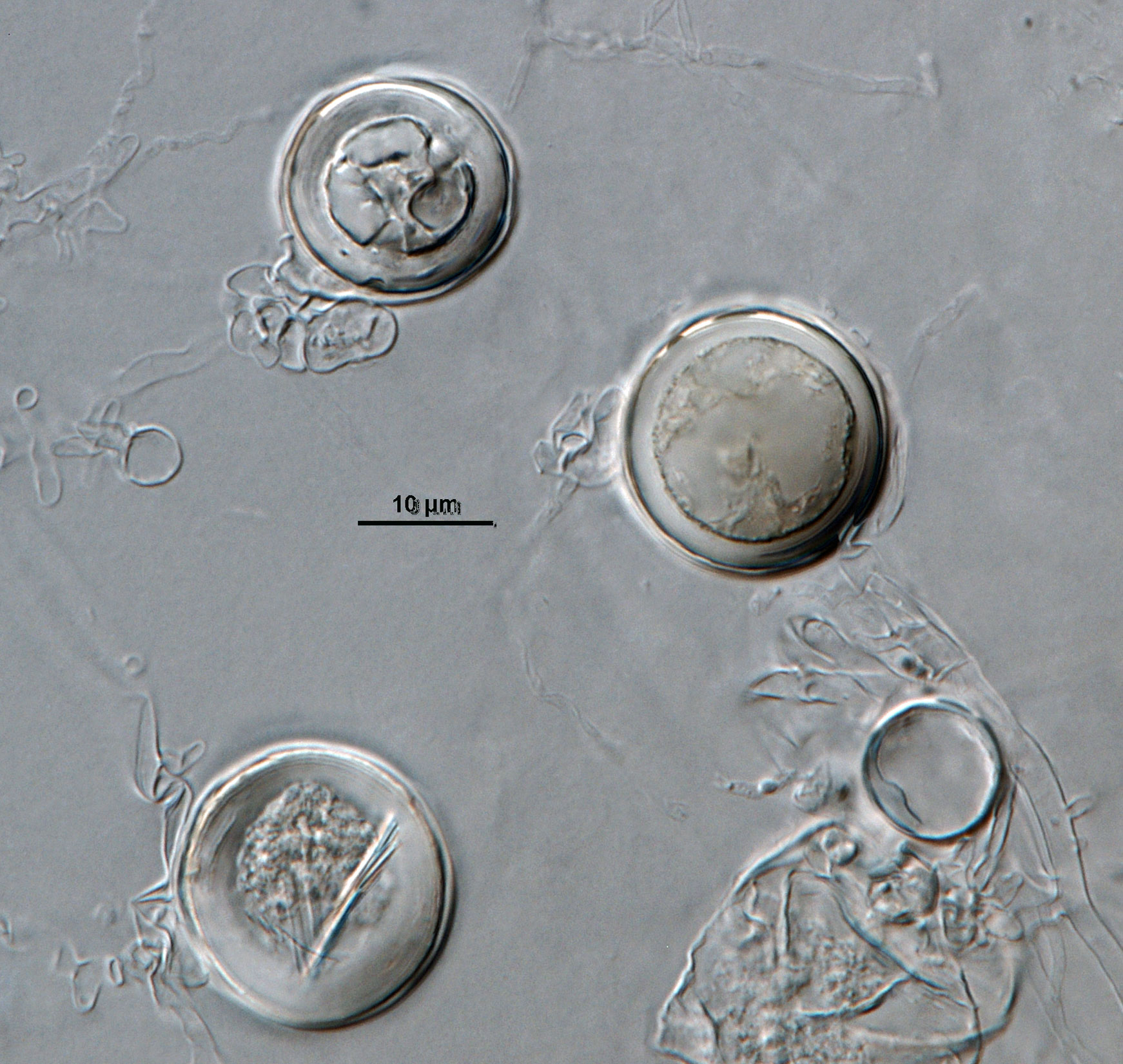 Phytophthora acerina nbsp;(ex-type CPHST BL 114) sexual phase formed on hemp seed agar. Smooth-walled oogonianbsp;with paragynous antheridianbsp;and plerotic oospores. Photonbsp;by G. Abad, USDA-APHIS-PPQ.
Phytophthora acerina nbsp;(ex-type CPHST BL 114) sexual phase formed on hemp seed agar. Smooth-walled oogonianbsp;with paragynous antheridianbsp;and plerotic oospores. Photonbsp;by G. Abad, USDA-APHIS-PPQ.
Phytophthora acerina (ex-type CPHST BL 114) sexual phase formed on hemp seed agar. Smooth-walled oogonia with paragynous antheridia and plerotic oospores. Photo by G. Abad, USDA-APHIS-PPQ.
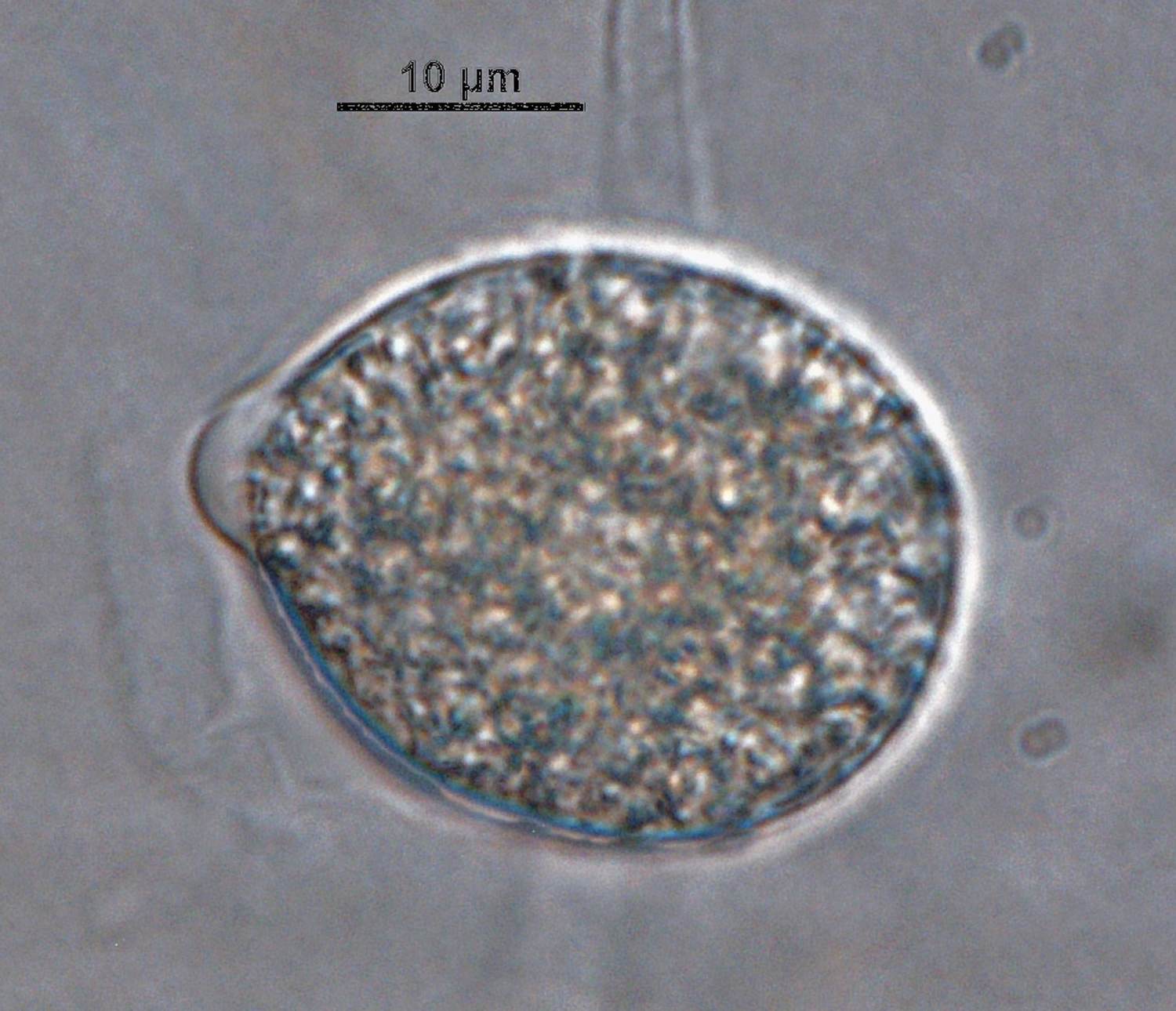 Phytophthora acerina nbsp;(CPHST BL 114, ex-type) asexual phase;nbsp;semi-papillatenbsp;persistent sporangium. Photonbsp;by G. Abad, USDA-APHIS-PPQ.
Phytophthora acerina nbsp;(CPHST BL 114, ex-type) asexual phase;nbsp;semi-papillatenbsp;persistent sporangium. Photonbsp;by G. Abad, USDA-APHIS-PPQ.
Phytophthora acerina (CPHST BL 114, ex-type) asexual phase; semi-papillate persistent sporangium. Photo by G. Abad, USDA-APHIS-PPQ.
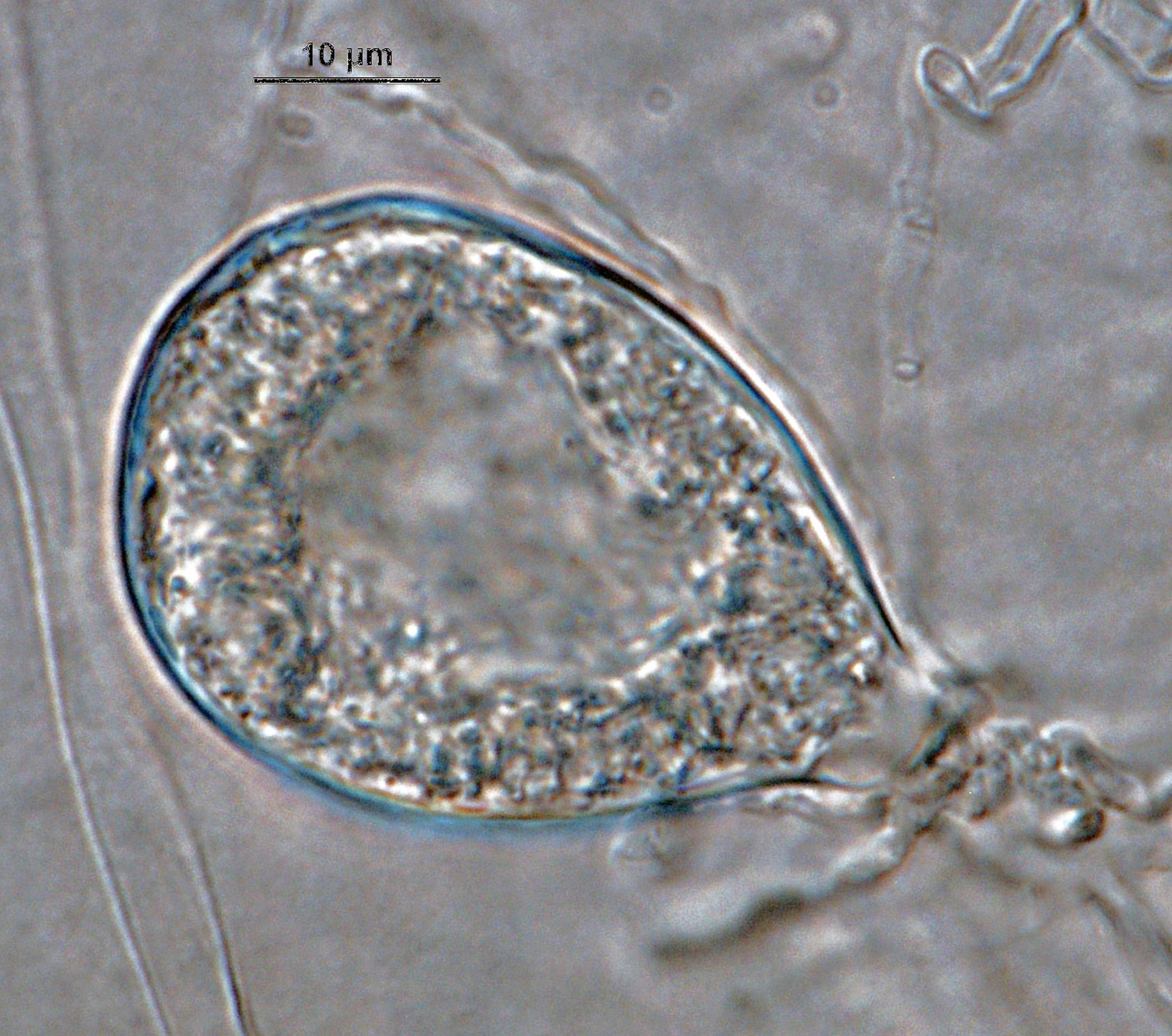 Phytophthora acerina nbsp;(CPHST BL 114, ex-type) asexual phase;nbsp;semi-papillatenbsp;persistent sporangium. Photonbsp;by G. Abad, USDA-APHIS-PPQ.
Phytophthora acerina nbsp;(CPHST BL 114, ex-type) asexual phase;nbsp;semi-papillatenbsp;persistent sporangium. Photonbsp;by G. Abad, USDA-APHIS-PPQ.
Phytophthora acerina (CPHST BL 114, ex-type) asexual phase; semi-papillate persistent sporangium. Photo by G. Abad, USDA-APHIS-PPQ.
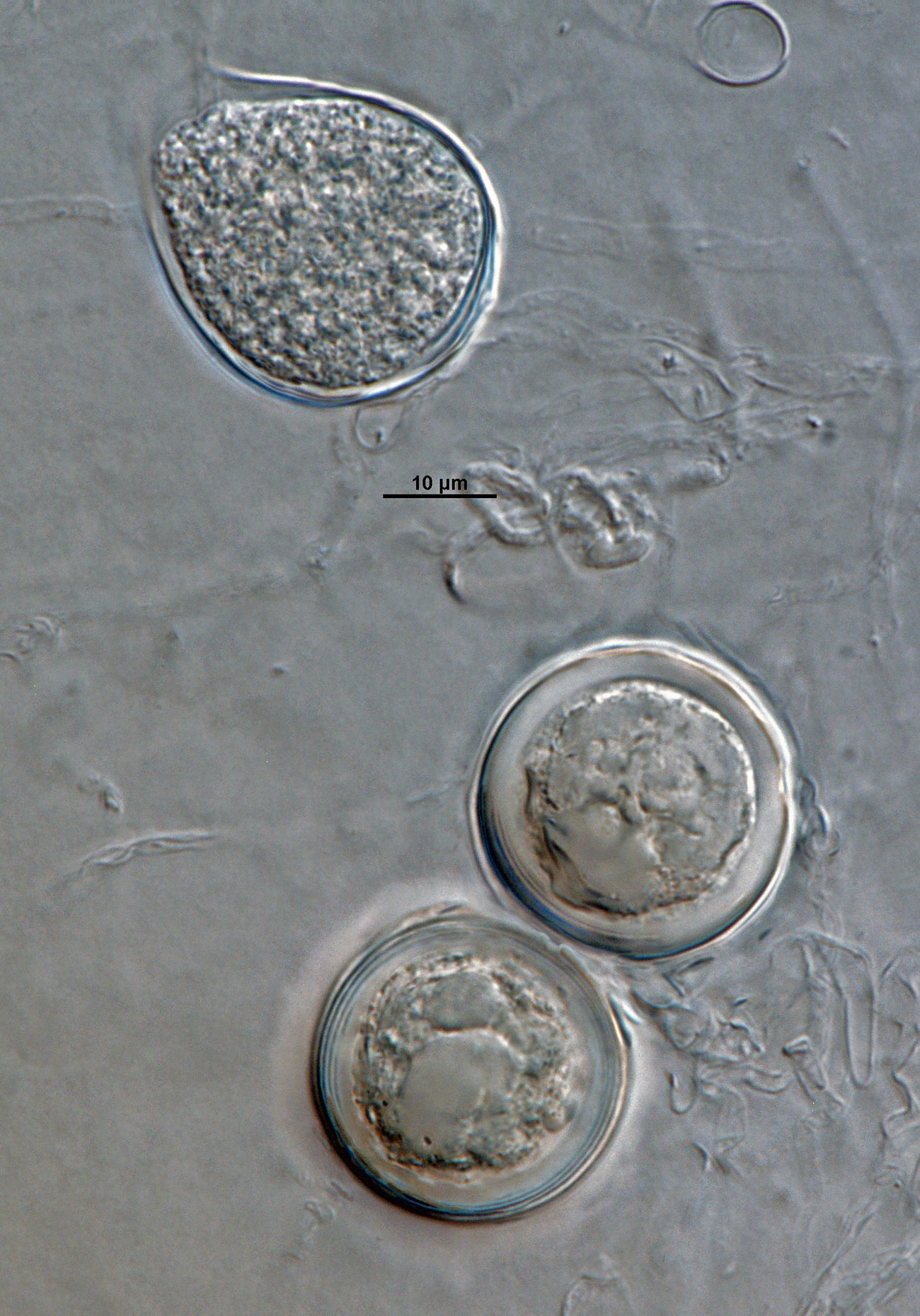 Phytophthora acerina nbsp;(ex-type CPHST BL 114) asexual and sexual phase. Smooth-walled oogonianbsp;and semi-papillatenbsp;persistent sporangium. Photonbsp;by G. Abad, USDA-APHIS-PPQ.
Phytophthora acerina nbsp;(ex-type CPHST BL 114) asexual and sexual phase. Smooth-walled oogonianbsp;and semi-papillatenbsp;persistent sporangium. Photonbsp;by G. Abad, USDA-APHIS-PPQ.
Phytophthora acerina (ex-type CPHST BL 114) asexual and sexual phase. Smooth-walled oogonia and semi-papillate persistent sporangium. Photo by G. Abad, USDA-APHIS-PPQ.
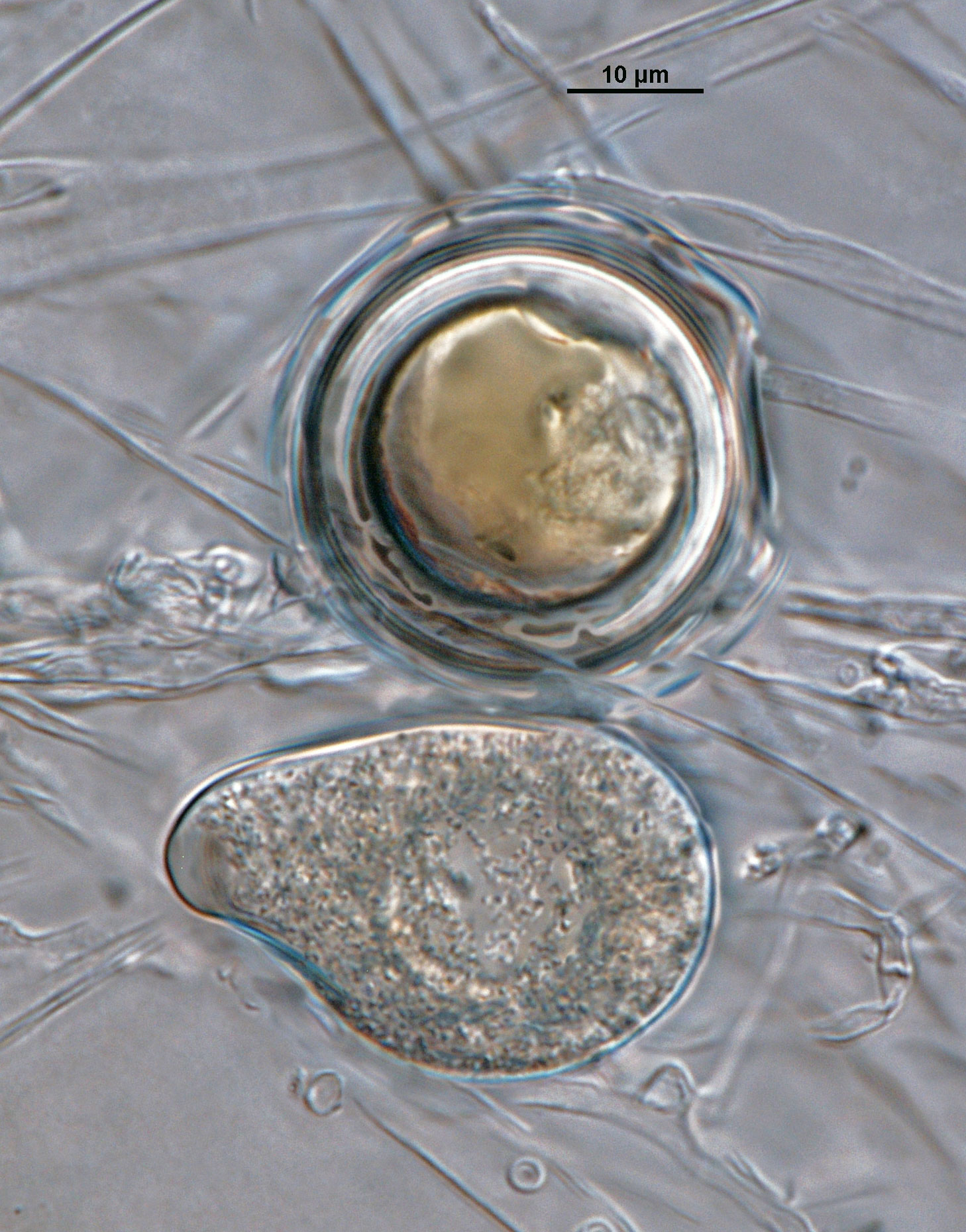 Phytophthora acerina nbsp;(ex-type CPHST BL 114) asexual and sexual phase. Smooth-walled oogonium and semi-papillatenbsp;persistent sporangium. Photonbsp;by G. Abad, USDA-APHIS-PPQ.
Phytophthora acerina nbsp;(ex-type CPHST BL 114) asexual and sexual phase. Smooth-walled oogonium and semi-papillatenbsp;persistent sporangium. Photonbsp;by G. Abad, USDA-APHIS-PPQ.
Phytophthora acerina (ex-type CPHST BL 114) asexual and sexual phase. Smooth-walled oogonium and semi-papillate persistent sporangium. Photo by G. Abad, USDA-APHIS-PPQ.
Phytophthora spp. in subclade 10b: portion of the seven-loci ML phylogeny featuring the type cultures of 212 described species (by T. Bourret). Notice the position of P. afrocarpa Ex-type CBS 147467 = S&T BL 204. Gloria Abad, USDA S&T.
Phytophthora spp. in subclade 10b: Morphological Tabular key (PDF) and Tabular key legends (PDF) in IDphy2 KEY SECTION. Notice the data of P. afrocarpa Ex-type CBS 147467 = S&T BL 204. Gloria Abad, USDA S&T.
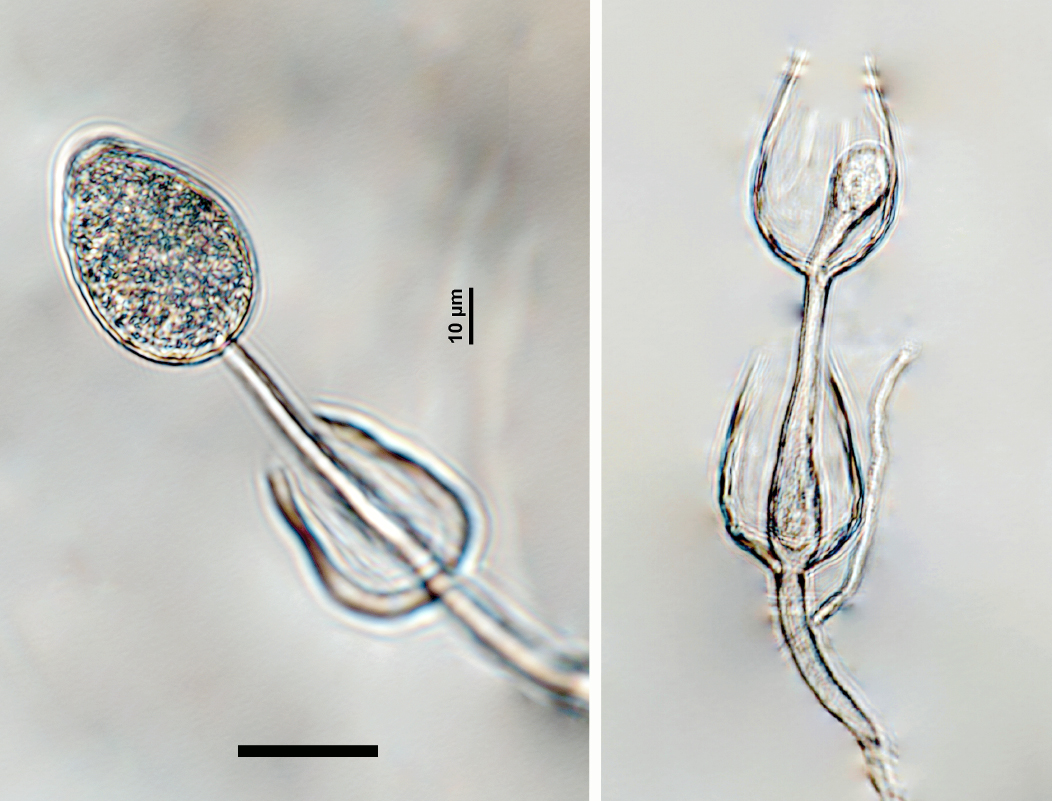 persistent, non-papillate, predominantly ovoid sporangia exhibiting internal extended proliferation; scale bar = 20micro;m
persistent, non-papillate, predominantly ovoid sporangia exhibiting internal extended proliferation; scale bar = 20micro;m
persistent, non-papillate, predominantly ovoid sporangia exhibiting internal extended proliferation; scale bar = 20µm
Phytophthora spp. in Clade 5: portion of the seven-loci ML phylogeny featuring the type cultures of 212 described species (by T. Bourret). Notice the position of P. agathiidicida Ex-type CBS 149819 = S&T BL 154. Gloria Abad, USDA S&T.
Phytophthora spp. in Clade 5: Morphological Tabular key (PDF) and Tabular key legends (PDF) in IDphy2 KEY SECTION. Notice the data of P. agathiidicida Ex-type CBS 149819 = S&T BL 154. Gloria Abad, USDA S&T.
 Phytophthora agathidicida (CPHST BL 154) colonies of the ex-type grown for 7 days on (a) V8reg; Agar, (b) potato dextrose agar, and (c) malt extract agar; photo by Krysta Jennings and Leandra Knight, USDA-APHIS-PPQ
Phytophthora agathidicida (CPHST BL 154) colonies of the ex-type grown for 7 days on (a) V8reg; Agar, (b) potato dextrose agar, and (c) malt extract agar; photo by Krysta Jennings and Leandra Knight, USDA-APHIS-PPQ
Phytophthora agathidicida (CPHST BL 154) colonies of the ex-type grown for 7 days on (a) V8® Agar, (b) potato dextrose agar, and (c) malt extract agar; photo by Krysta Jennings and Leandra Knight, USDA-APHIS-PPQ
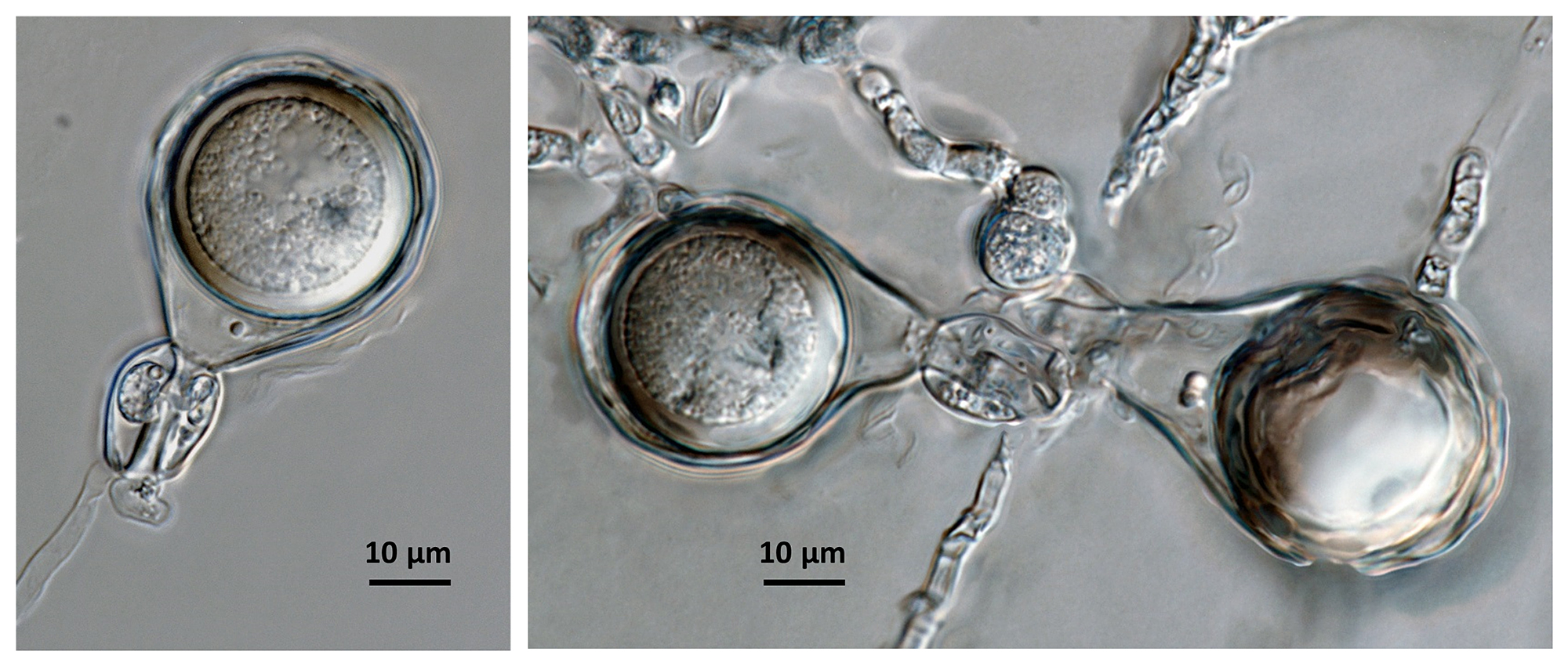 Phytophthora agathidicida nbsp;(ex-type CPHST BL 154) sexual phase formed on hemp seed agar: oogonia with wavy wall and tapered base,nbsp;amphyginous antheridia,nbsp;and plerotic, thick-walled oospores; photos by G.Abad, USDA-APHIS-PPQ.
Phytophthora agathidicida nbsp;(ex-type CPHST BL 154) sexual phase formed on hemp seed agar: oogonia with wavy wall and tapered base,nbsp;amphyginous antheridia,nbsp;and plerotic, thick-walled oospores; photos by G.Abad, USDA-APHIS-PPQ.
Phytophthora agathidicida (ex-type CPHST BL 154) sexual phase formed on hemp seed agar: oogonia with wavy wall and tapered base, amphyginous antheridia, and plerotic, thick-walled oospores; photos by G.Abad, USDA-APHIS-PPQ.
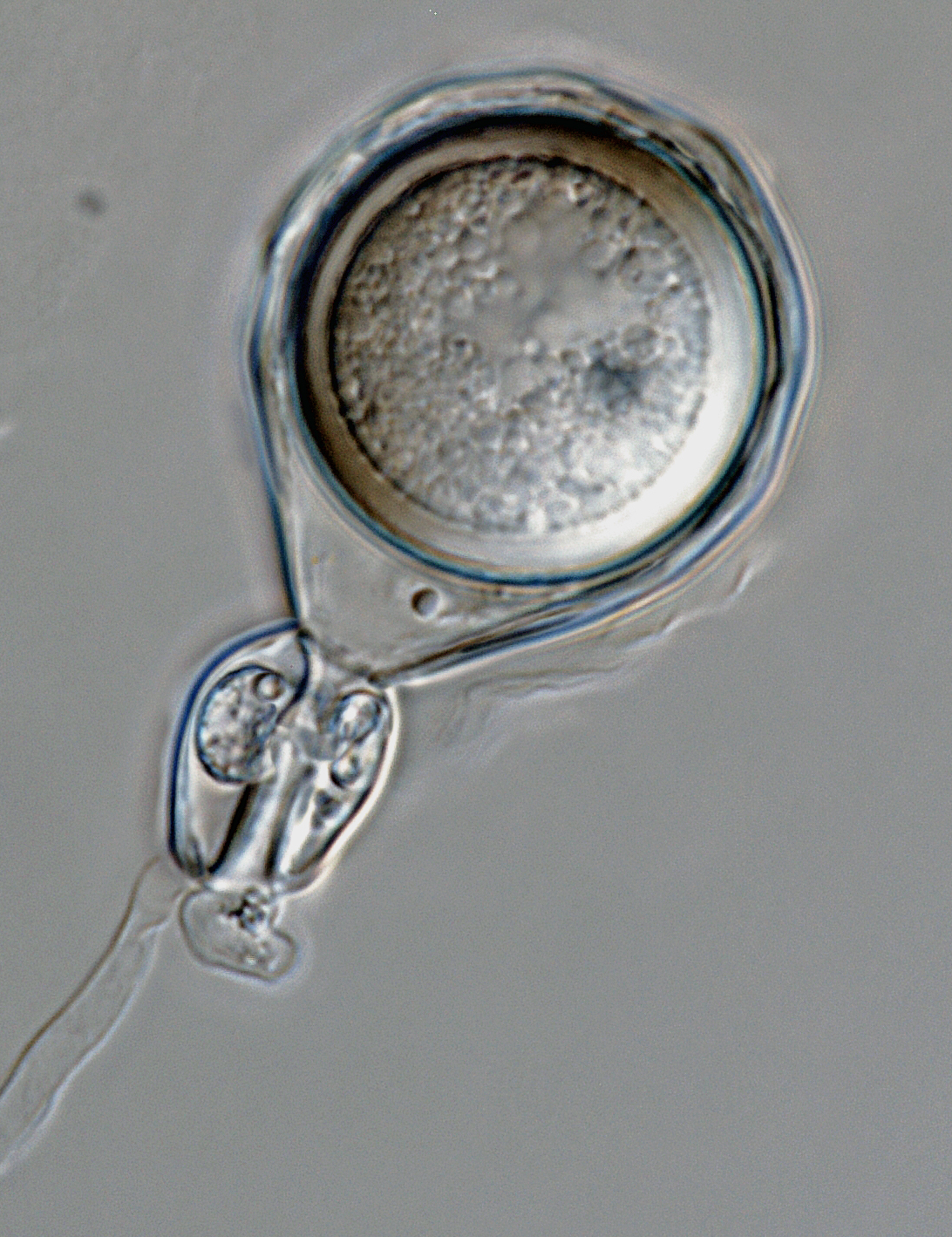 Phytophthora agathidicida nbsp;(ex-type CPHST BL 154) sexual phase formed on hemp seed agar: oogoniumnbsp;with wavy wall and tapered base,nbsp;amphyginous antheridium,nbsp;and plerotic, thick-walled oospore; photonbsp;by G.Abad, USDA-APHIS-PPQ.
Phytophthora agathidicida nbsp;(ex-type CPHST BL 154) sexual phase formed on hemp seed agar: oogoniumnbsp;with wavy wall and tapered base,nbsp;amphyginous antheridium,nbsp;and plerotic, thick-walled oospore; photonbsp;by G.Abad, USDA-APHIS-PPQ.
Phytophthora agathidicida (ex-type CPHST BL 154) sexual phase formed on hemp seed agar: oogonium with wavy wall and tapered base, amphyginous antheridium, and plerotic, thick-walled oospore; photo by G.Abad, USDA-APHIS-PPQ.


